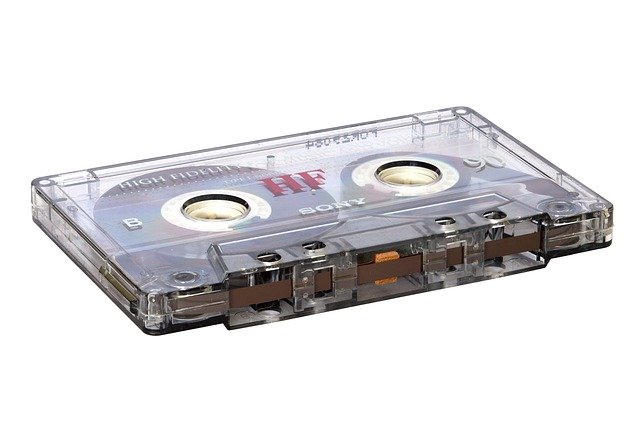There’s no denying the inherent advantages of having surveillance video gathered on an IP network.
Simplified systems management, greater interoperability, business intelligence and data from cameras and the ability to add critical services such as video analytics, redundant backup and video verification, to name a few.
But while the IP market continues to grow strongly, the transition from analogue has been slower than anticipated.
The global surveillance market is expected to reach more than $42bn by 2019, according to a new report from Transparency Market Research. The IP-based video surveillance market will grow rapidly at a compound annual growth rate (CAGR) of 24.2% during the forecast period from 2013 to 2019.
Growing installations of IP cameras and the need for surveillance cameras with better video quality are driving demand for IP-based video surveillance systems globally, according to the report Video Surveillance and VSaaS Market […] 2013 to 2019.
Still, there’s a large installed base of analogue cameras and these devices continue to be specified daily. For many end users and facility managers, analogue hasn’t lost its appeal.
Bandwidth concerns
Analogue cameras cost less than IP and there’s no interaction required with the IT department to piggyback cameras on the network or deploy cloud services. Bandwidth concerns remain for high-resolution video, although compression technologies such as H.264 have assisted in this area.
The other scenario to address bandwidth is the build -out of a separate video surveillance network or deploying fiber optics – but at what price?
For many users, including smaller businesses or even enterprise customers with a large installed base of these cameras, analogue is where they plan to stay, especially if budgets are tight and a total rip an
Analogue systems are easier for the systems integrator to install, lowering the total cost of ownership for the user who pays less for these specifications in applied labor costs.
The cost of conversion from analogue to IP is clearly slowing the process. This isn’t to say that IP cameras won’t eventually eclipse analogue, but for now the industry must smooth the transition and migration process.
Forward-thinking companies have become heroes to installers and their customers, providing technology that leverages analogue infrastructures and keeps costs down – by as much as one-fourth of the cost of specifying an entirely new IP video infrastructure.
New connectivity pathways
In addition to traditional encoders that convert an analogue signal to a digital stream, there are new, ONVIF-compatible video encoders that seamlessly bring analogue systems onto the network, including cameras and DVRs.
These newer devices, such as mobiDEOS’ UCNE platform, allow for even more analogue cameras to integrate with the network (up to 1,000) compared to traditional video encoders that transition only about 250 cameras at the same price.
This brings out the best of both worlds – IP connectivity with low-cost analogue systems – for many smaller applications and businesses in retail and other vertical industries.
The latest technologies foster true systems integration and connect to VMS systems, access control technologies and other surveillance components, including video walls. They include redundant back-up architecture to minimise bandwidth usage, reducing costs while increasing reliability.
With new encoder technologies, the end user can leverage their analogue cameras and migrate to IP as their budget allows.
ONVIF compatibility
An open standards protocol, ONVIF is assisting in accelerating the transition to IP and cloud-based architectures as it supports low-cost integration of analogue cameras and DVRs. It is an open industry forum that promotes and develops global standards for interfaces of IP-based physical security products.
ONVIF-compatible video encoding platforms ensure greater interoperability across connected products conforming to the protocol. Products which are ONVIF compatible and compliant help provide easier, more seamless integration.
For the installer, the learning curve is low with ONVIF-compatible products. ONVIF products make set-up and configuration extremely simple and support automatic retrofits to existing systems because they intuitively identify and connect components as surveillance networks grow.
It’s critical for systems integrators to work with customers on a consultative basis to determine the best solution for their needs. They may require IP cameras, but only at selected locations.
Perhaps they want to try to leverage their current existing investment of analogue cameras before eventually going IP, but still require the benefits of the network.
Now, it’s possible. The user can attain the advantages of network-based technology with cost-effective analogue migration products.
The integrator can add services, such as video analytics, video management, video verification and other integrated security products. It’s not a question of if the industry is moving to IP – but when.
In the meantime, we have to make conversion a bit easier, or the migration will continue to veer off course.
Free Download: The Video Surveillance Report 2023
Discover the latest developments in the rapidly-evolving video surveillance sector by downloading the 2023 Video Surveillance Report. Over 500 responses to our survey, which come from integrators to consultants and heads of security, inform our analysis of the latest trends including AI, the state of the video surveillance market, uptake of the cloud, and the wider economic and geopolitical events impacting the sector!
Download for FREE to discover top industry insight around the latest innovations in video surveillance systems.